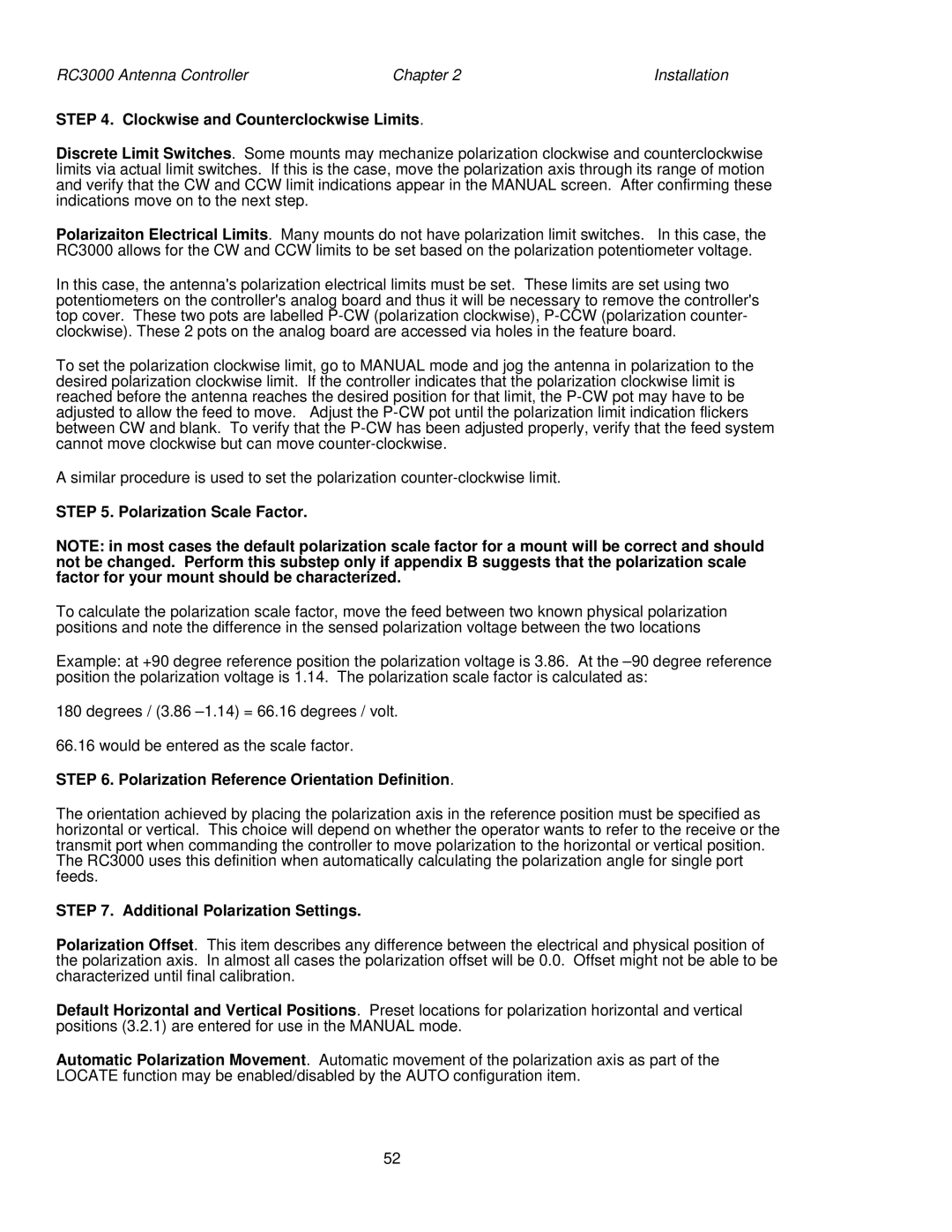RC3000 Antenna Controller | Chapter 2 | Installation |
STEP 4. Clockwise and Counterclockwise Limits.
Discrete Limit Switches. Some mounts may mechanize polarization clockwise and counterclockwise limits via actual limit switches. If this is the case, move the polarization axis through its range of motion and verify that the CW and CCW limit indications appear in the MANUAL screen. After confirming these indications move on to the next step.
Polarizaiton Electrical Limits. Many mounts do not have polarization limit switches. In this case, the RC3000 allows for the CW and CCW limits to be set based on the polarization potentiometer voltage.
In this case, the antenna's polarization electrical limits must be set. These limits are set using two potentiometers on the controller's analog board and thus it will be necessary to remove the controller's top cover. These two pots are labelled
To set the polarization clockwise limit, go to MANUAL mode and jog the antenna in polarization to the desired polarization clockwise limit. If the controller indicates that the polarization clockwise limit is reached before the antenna reaches the desired position for that limit, the
A similar procedure is used to set the polarization
STEP 5. Polarization Scale Factor.
NOTE: in most cases the default polarization scale factor for a mount will be correct and should not be changed. Perform this substep only if appendix B suggests that the polarization scale factor for your mount should be characterized.
To calculate the polarization scale factor, move the feed between two known physical polarization positions and note the difference in the sensed polarization voltage between the two locations
Example: at +90 degree reference position the polarization voltage is 3.86. At the
180 degrees / (3.86
66.16 would be entered as the scale factor.
STEP 6. Polarization Reference Orientation Definition.
The orientation achieved by placing the polarization axis in the reference position must be specified as horizontal or vertical. This choice will depend on whether the operator wants to refer to the receive or the transmit port when commanding the controller to move polarization to the horizontal or vertical position. The RC3000 uses this definition when automatically calculating the polarization angle for single port feeds.
STEP 7. Additional Polarization Settings.
Polarization Offset. This item describes any difference between the electrical and physical position of the polarization axis. In almost all cases the polarization offset will be 0.0. Offset might not be able to be characterized until final calibration.
Default Horizontal and Vertical Positions. Preset locations for polarization horizontal and vertical positions (3.2.1) are entered for use in the MANUAL mode.
Automatic Polarization Movement. Automatic movement of the polarization axis as part of the LOCATE function may be enabled/disabled by the AUTO configuration item.
52
